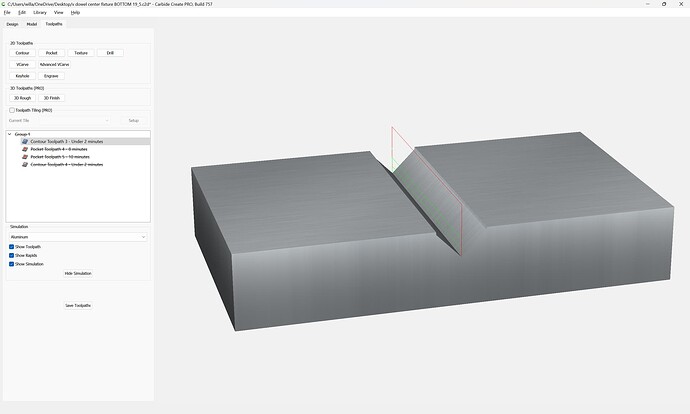WillAdams
(William Adams (Carbide 3D))
2
You can see where the operation will start by noting where the red rapid moves down to meet the first cut:
Where possible avoid slotting and add geometry and cut as a pocket
and/or
and consider leaving a roughing clearance and taking a finishing pass.
